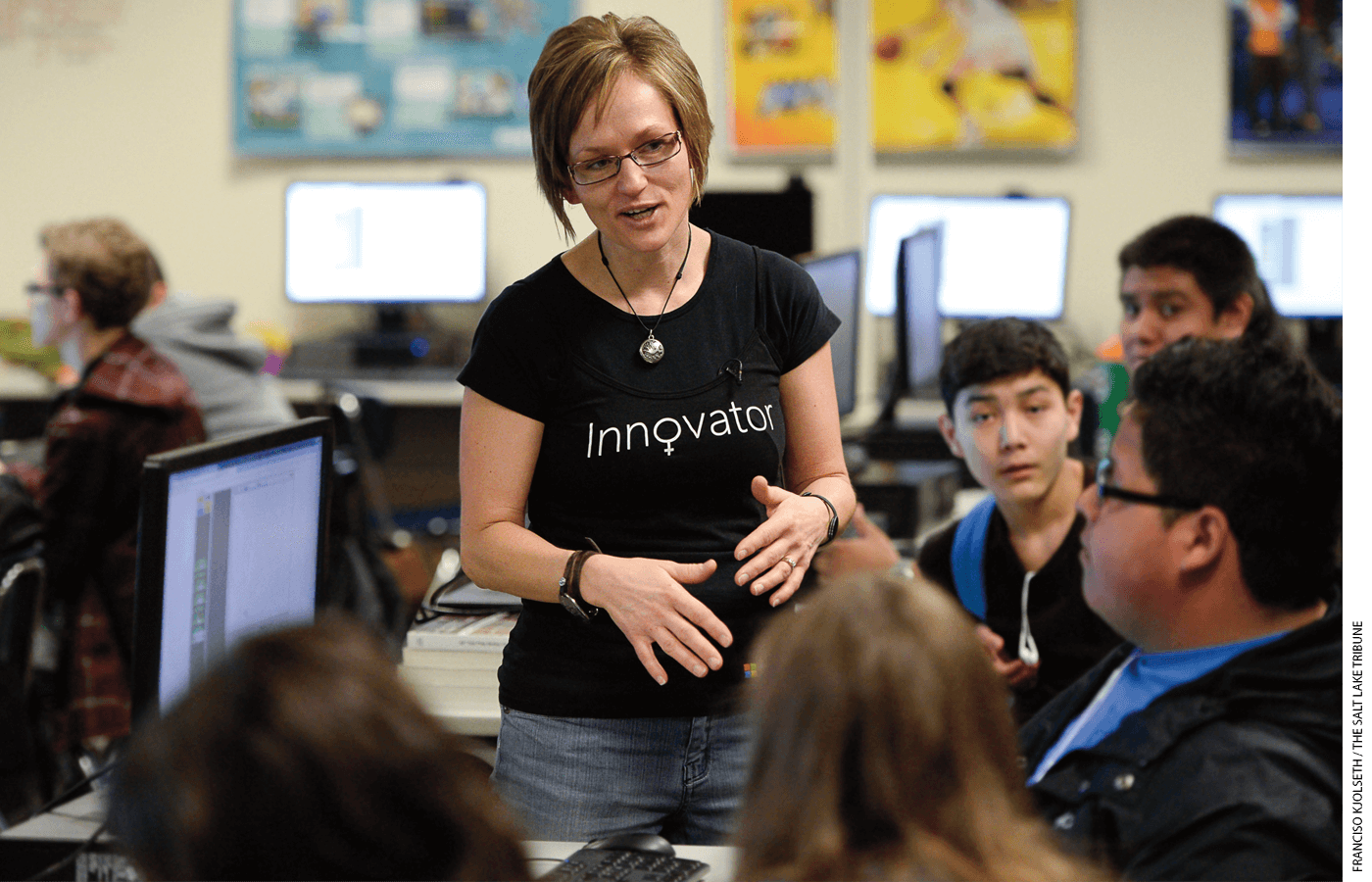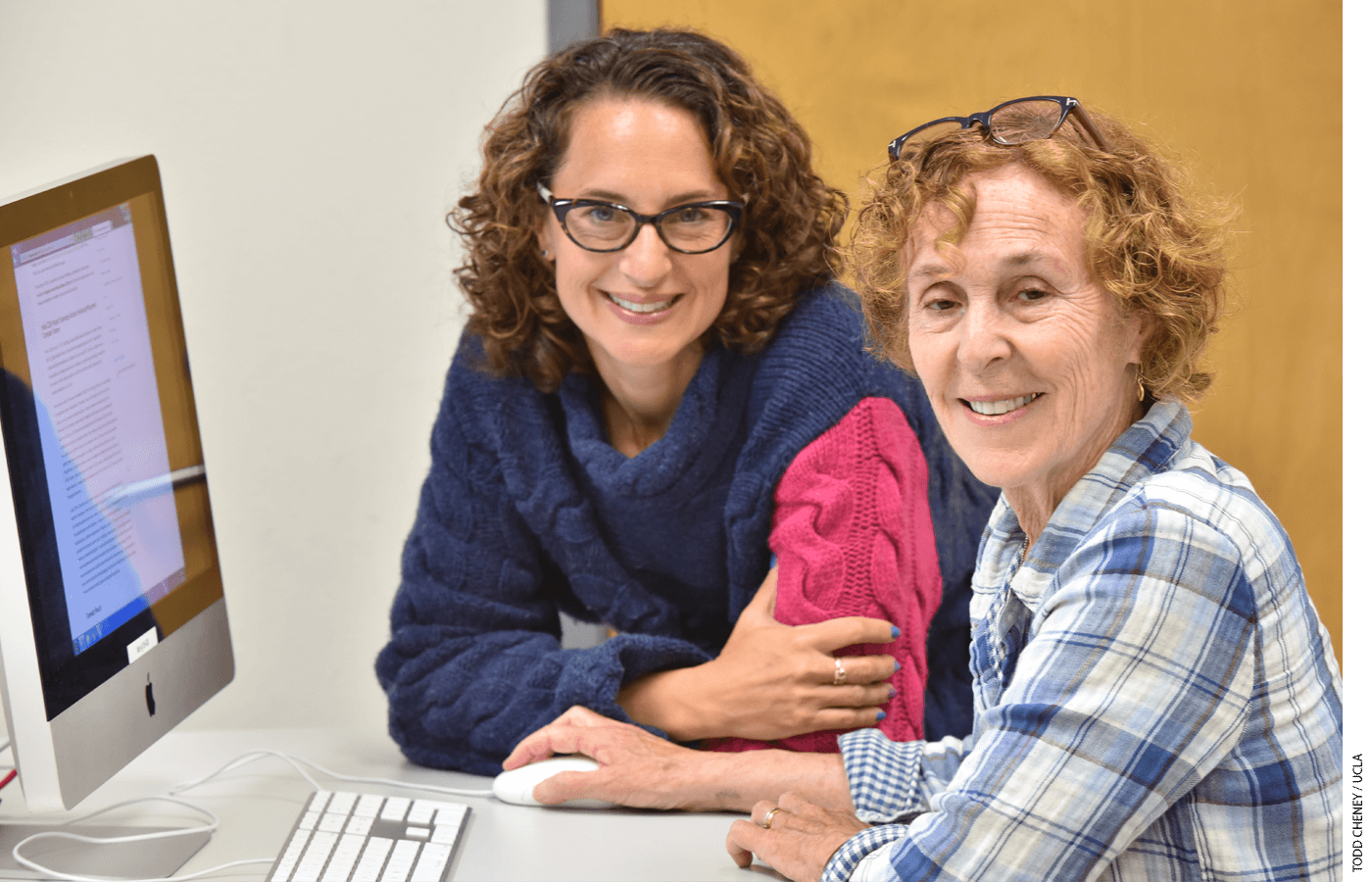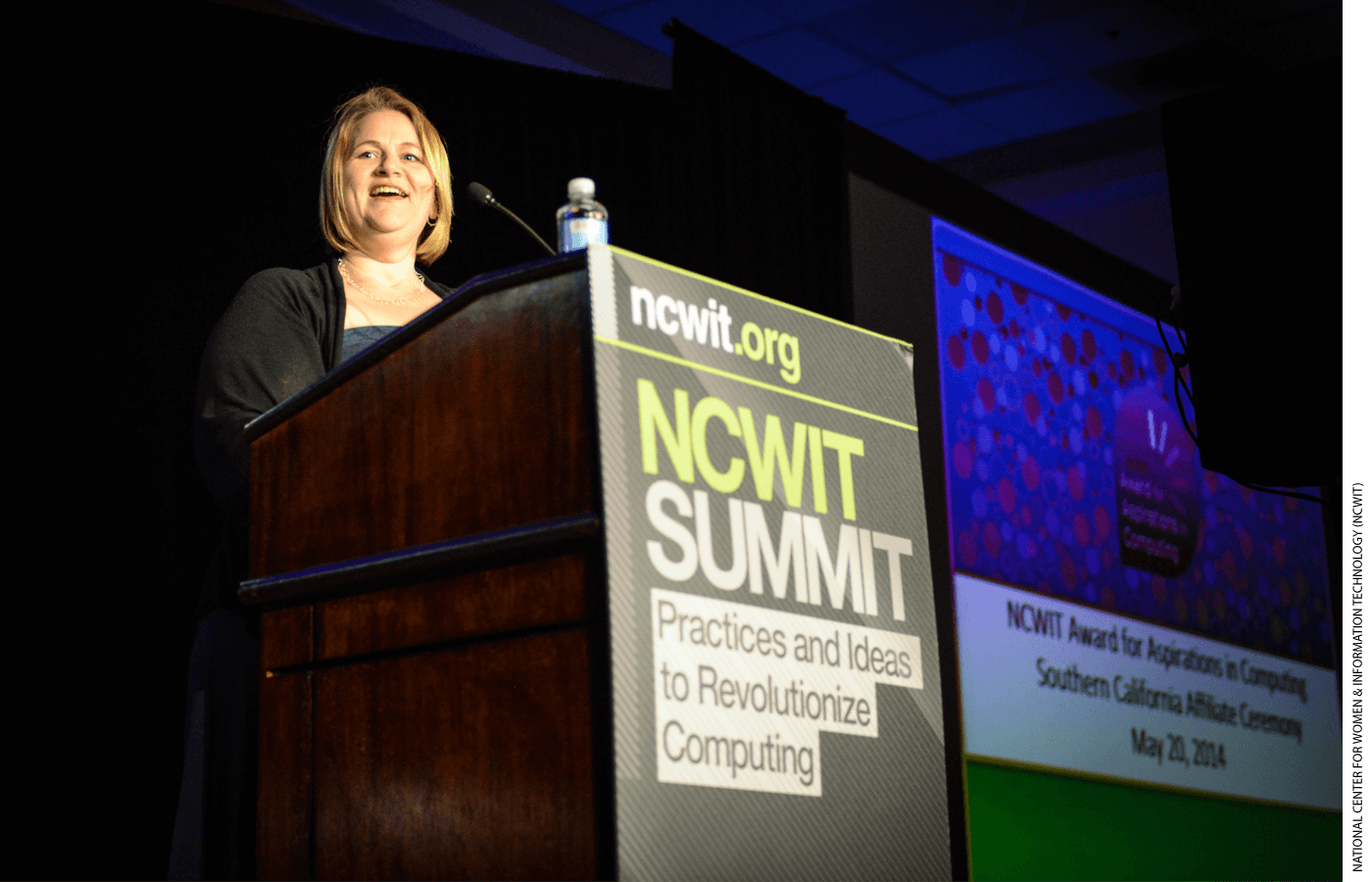
Step into Nicole Reitz-Larsen’s classroom in Salt Lake City’s West High School and see students grooving to “Single Ladies” or zigzagging to execute one of LeBron James’s handshakes. You might think it’s a dance class. It’s not.
Reitz-Larsen is teaching computer science through movement. The former German-language and business instructor found that linking difficult concepts such as algorithms and the binary system to students’ interests helps the students grasp a topic that many were leery about before they stepped into her class.
“I’m always thinking about how to sell it to my students,” said Reitz-Larsen, who learned how to teach the complex subject in three months after administrators asked her to pioneer it at West. “You have those kids who say, ‘I’m never going to use this.’”
Young people who are glued to their phones and laptops for many of their waking hours are often apathetic when it comes to figuring out what makes their devices tick. About one of every three girls and half of boys think computer science is important for them to learn, according to a 2020 Google/Gallup, Inc., survey of 7,000 educators, parents, and students.
The finding came four years after President Barack Obama declared that computer science is as essential for K–12 students as reading, writing, and arithmetic. The announcement gave momentum to a computer-science-for-all movement and propelled industry-backed nonprofits such as code.org to the forefront of debates about what should be taught in schools. Joe Biden, both as vice president and during his 2020 presidential campaign, emphasized his support for having K–12 students learn the subject.
The effort is part of a broader attempt to overhaul and update the U.S. education system. Proponents argue that it’s time to amend the public-school curriculum to reflect life skills demanded by the ever-changing Information Age. Such a reframing is necessary, they say, to ensure students can compete for positions focused on cloud computing, artificial intelligence, and mobile-app development.
After Obama’s high-profile endorsement of code.org’s mission, the organization joined educators and other advocates to help persuade state legislatures to allocate millions of dollars toward new laws that advance its vision that “every student in every school has the opportunity to learn computer science.”
Some states made more progress than others. Thirty-seven adopted computer-science standards for K–12, and 20 required all high schools to offer the subject. In Nevada and South Carolina, the discipline is now a graduation requirement. New York City committed to making the subject available at every K–12 school by 2025. New rules such as these helped drive about 186,000 students to take Advanced Placement computer-science tests in 2020, nine times more than in 2010.
A 2020 report from code.org found that 47 percent of the nation’s high schools teach computer science. Despite a growing belief among parents, administrators, and students in computer science’s benefits, and millions of dollars allocated to offering it in K–12 schools, gaps in access and participation among Black, Hispanic, and white students persist.
Today, computer-science-for-all leaders acknowledge they’ve hit a plateau and that they need more-widespread buy-in from lawmakers and educators and increased funding to overcome disparities in the U.S. education system that fall along racial and socioeconomic lines.
“Early on, we got all these early-adopter states, school districts, and teachers raising their hands, and there was a frenzy of activity. Now we’re moving into people being told to do it,” said Ruthe Farmer, chief evangelist for CSforAll, a New York–based nonprofit. “The skepticism around how we’re going to get this done is still there.”
Constraining the movement’s growth are a scarcity of well-qualified teachers, particularly in math and science, and competition for resources in cash-strapped school districts. Hard-fought progress was also stalled by the coronavirus pandemic, when states such as Colorado and Missouri reallocated or froze funding dedicated to broadening access to the subject in K–12.
At the same time, Covid-19 laid bare long-standing inequities in access to laptops and high-speed broadband connections necessary to expand availability across cultures and to English language learners, rural students, and those with disabilities.

As advocates remain focused on quantifying computer science’s inroads into public schools, there is a dearth of research that evaluates the effectiveness of different instructional methods for developing such skills. Assessments with which to measure curriculum quality, reach, and relevance are also largely absent.
What’s more, there is no consensus on a robust definition of computer science, with some principals assuming courses that teach office skills will suffice. Some advocates now say it’s time to step back and reassess whether computer-science education really is “for all.”
“We are going really, really fast in trying to get computer science into schools and there absolutely is an urgency,” said Julie Flapan, director of the Computer Science Equity Project at the University of California, Los Angeles.
“We have to have conversations about what’s good for computer science and what’s good for kids. We wrestle with these tensions,” added Flapan, who is also co-director of the CSforCA Coalition. “We need to be mindful about not creating unintended consequences.”
The tradeoffs of adding the subject in K–12 schools are now becoming apparent. In California, computer-science enrollment growth came at the expense of social studies, English/language arts, foreign language, and arts courses, researchers found. The field’s supporters stress the subject must be taught alongside, or integrated into, other core courses, rather than replacing them.
“I don’t think math class or computer science should be an either-or situation,” wrote Jane Margolis, a senior researcher at the University of California, Los Angeles, and author of Stuck in the Shallow End: Education, Race, and Computing, via email. “Students need math, and they need computer science in today’s world.”

Or Do They?
Some scholars, though, reject the notion that all K–12 students should learn computer science, comparing the movement to other industry-driven efforts to add vocational training to public schools that led to agriculture, shop, and home-economics classes.
“Why would you teach coding to little kids, or even big kids, unless they want to be programmers?” said Larry Cuban, a professor emeritus of education at Stanford University.
“Because schools are politically vulnerable, this current push for coding for all, for computer science for all, is part of a historical trend to alter schools’ curriculum to meet the needs of a vested interest,” added Cuban, author of The Flight of a Butterfly or the Path of a Bullet? Using Technology to Transform Teaching and Learning.
The debate over the merits of computer science for all in K–12 schools is also occurring globally, said Andreas Schleicher, director for education and skills at the Organisation for Economic Co-operation and Development. He said teaching coding is not useful for K–12 students because coding languages change often.
“There is a debate about this that is similar to the one in the U.S.—you have here in Europe a technology industry that is very much pushing for these skills,” said Schleicher, “and educators are pushing back and saying they don’t want to teach for today’s workplaces; they want to teach for tomorrow’s workplaces.”
Schleicher said he does believe that students should learn how to think computationally, particularly as that kind of thinking applies to data science and artificial intelligence. But, he said, using computers just to teach with the tool of the day, like a pen in the 17th century, or a typewriter in the 1900s, is a “time-bound phenomenon” with little relevance for students’ futures.
These arguments point up a fundamental challenge for proponents of the computer-science-for-all movement: defining what the subject is and how it should be taught.
What Is Computer Science?
There is consensus on what computer science is not—basic computing skills such as Internet searching, keyboarding, and using a spreadsheet—but no universal agreement on what it actually is. There are many different definitions, largely because decisions about what and how students are taught are made at the state, district, and school level. New York emphasizes digital literacy; Texas incorporated the discipline into its technical career standards.
Many proponents of the computer-science-for-all movement, which began in the early 2000s, spend considerable time trying to dispel the notion that it’s solely about learning coding.
Coding languages used in developing software are a tool for computer science, educators say, just as arithmetic is a tool for math and words are a tool for verbal communication. At its core, computer science is about learning how to create new technologies, rather than simply using them, advocates stress. It strives, for example, to teach students how to design the software that will make the spreadsheet.
Just as important as coding, backers add, are foundational concepts such as computational thinking. This approach to computer science provides students with a way to solve problems by breaking them down into parts, and it can be integrated across subjects as early as kindergarten.
In some states, computer-science standards overlap with math standards and involve concepts such as sequencing, ordering, and sorting. Standards can also include science concepts such as devising a hypothesis, testing it, refining it, and perhaps redesigning an experiment after “debugging.”
Just as students should learn how to read, analyze, and write text effectively, they need exposure to computer science to become informed digital citizens who understand how technology impacts their everyday lives, said Yasmin Kafai, a professor at the University of Pennsylvania Graduate School of Education.
Kafai, co-author of Connected Code: Why Children Need to Learn Programming, said that a big part of the world nowadays is the digital public sphere, “where we interface through machines.”
“We want to provide students in K–12 with an understanding of what that actually is—it’s a designed world, and it makes a difference when you understand how it’s designed,” she added. “It helps to understand its limitations.”
Such skills might help young people feel comfortable working with large amounts of data and empower them to push back against the negative impacts of technology.
After defining what computer science means for their districts, administrators need to decide what outcomes they hope to achieve for their students, advocates say. They acknowledge that in the early years of computer-science education, they overemphasized its role in training future programmers. With a shortage of tech workers in many regions, workforce development has been a powerful argument for offering computer science.
Jobs in computer and information technology are among the best paying in the United States, with the median annual salary for these occupations clocking in at $91,250 in May 2020, more than twice the median annual pay for occupations overall. The U.S. Bureau of Labor Statistics projects that such jobs will be among the fastest growing in the next decade. Yet the vocational approach to computer science turns off some administrators, who…
